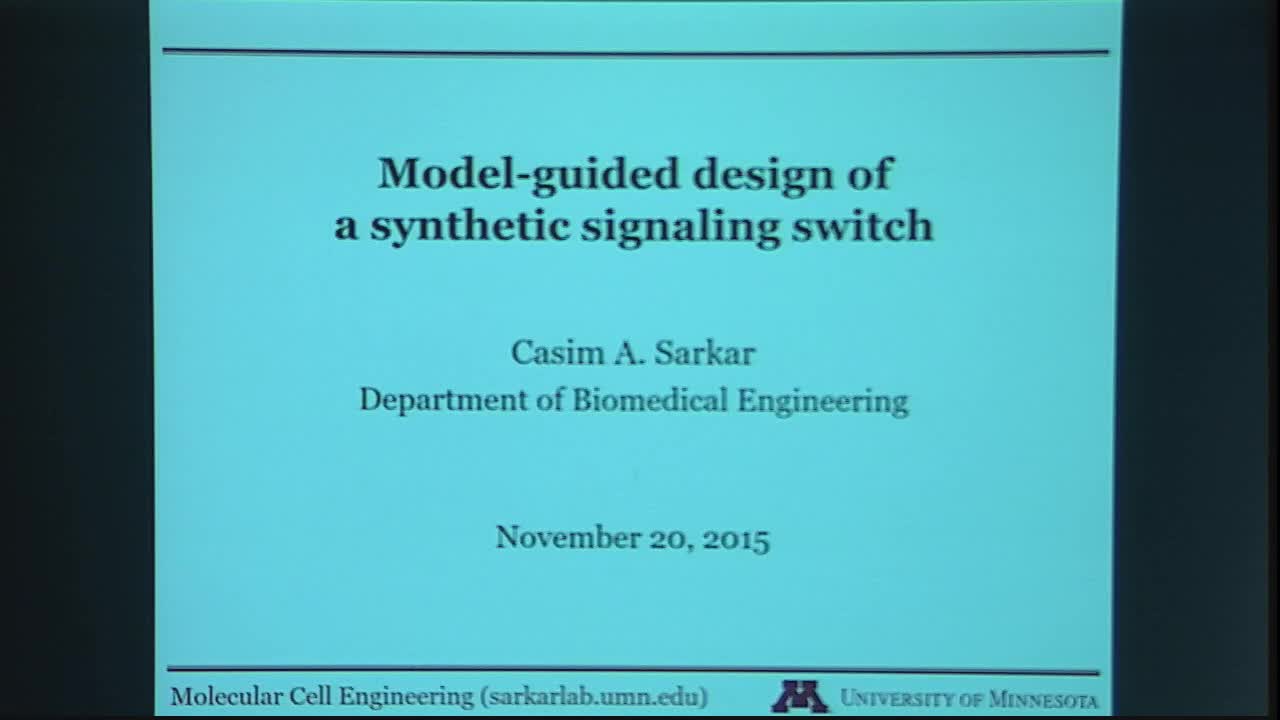Model-guided Design of a Synthetic Signaling Switch
Presenter
November 20, 2015
Keywords:
- signaling, synthetic
MSC:
- 91A28
Abstract
Signaling networks that convert graded stimuli into binary, all-or-none cellular responses are critical in processes ranging from cell-cycle control to lineage commitment. To exhaustively enumerate topologies that exhibit this switch-like behavior, we simulated all possible two- and three-component networks on random parameter sets, and assessed the resulting response profiles for both ultrasensitivity and bistability. Hybrid enzyme/transcription factor networks are the most robust in generating these switch-like properties; strikingly, a purely transcriptional framework is the most fragile in generating either ultrasensitive or bistable responses. The disparity in robustness among the network classes is due in part to zero-order ultrasensitivity. We then experimentally constructed the most robust two-component network from our simulations and the network immediately exhibited steep ultrasensitivity and bistability without post-hoc tweaking. Our unbiased approach highlights how modeling can facilitate design of robust synthetic gene networks.
